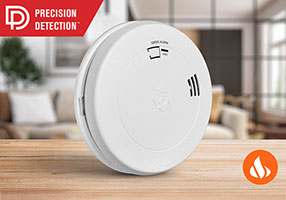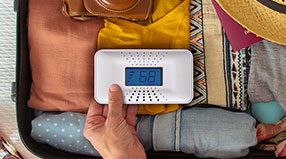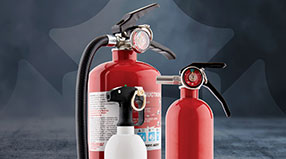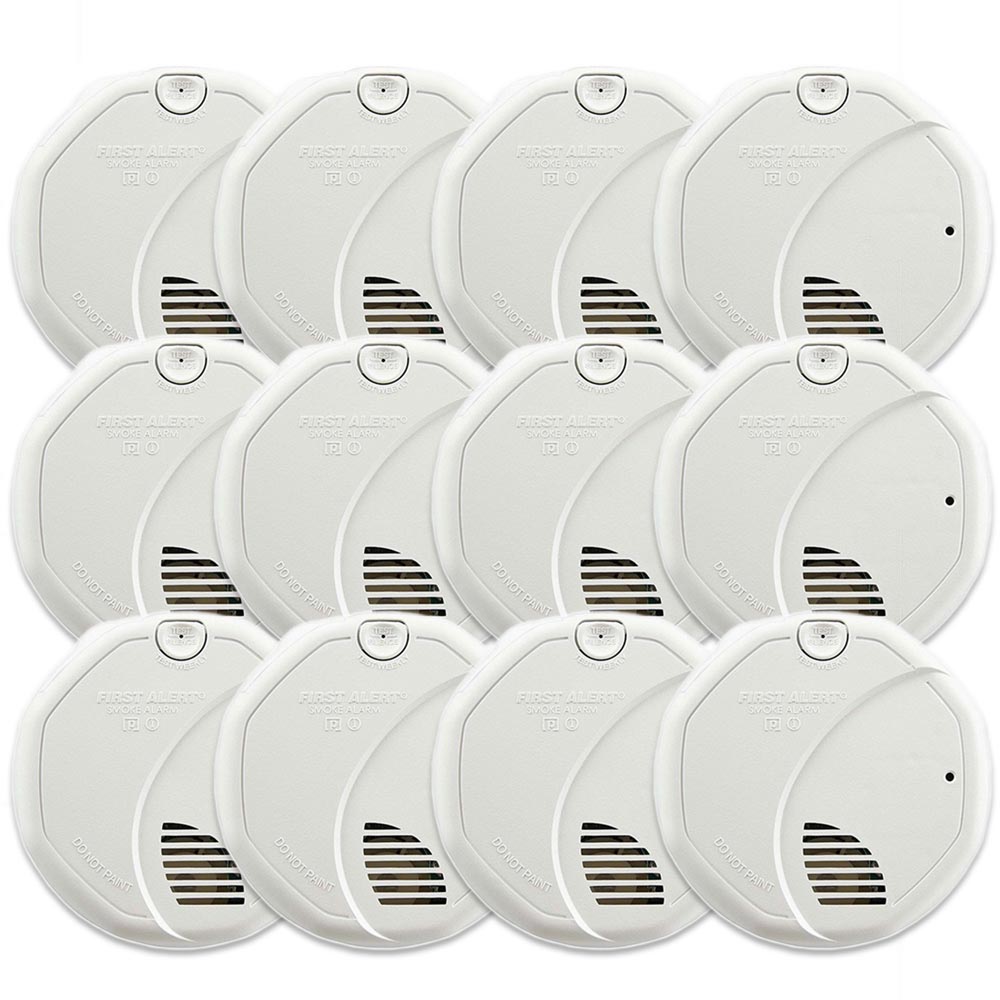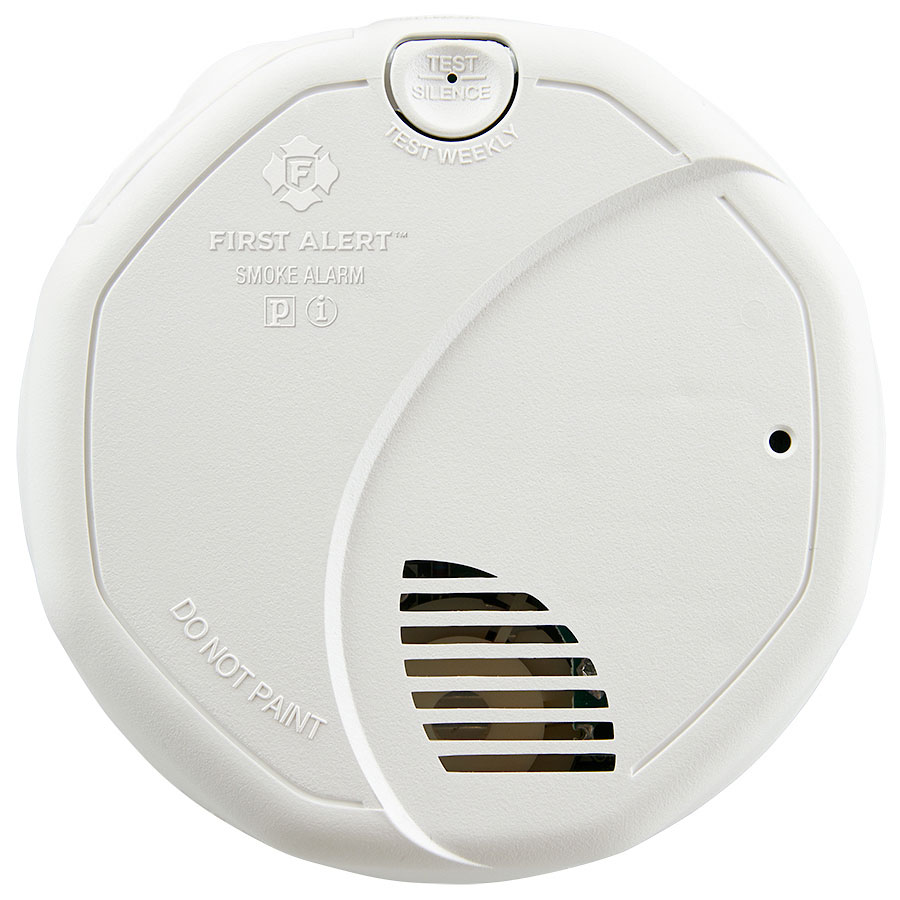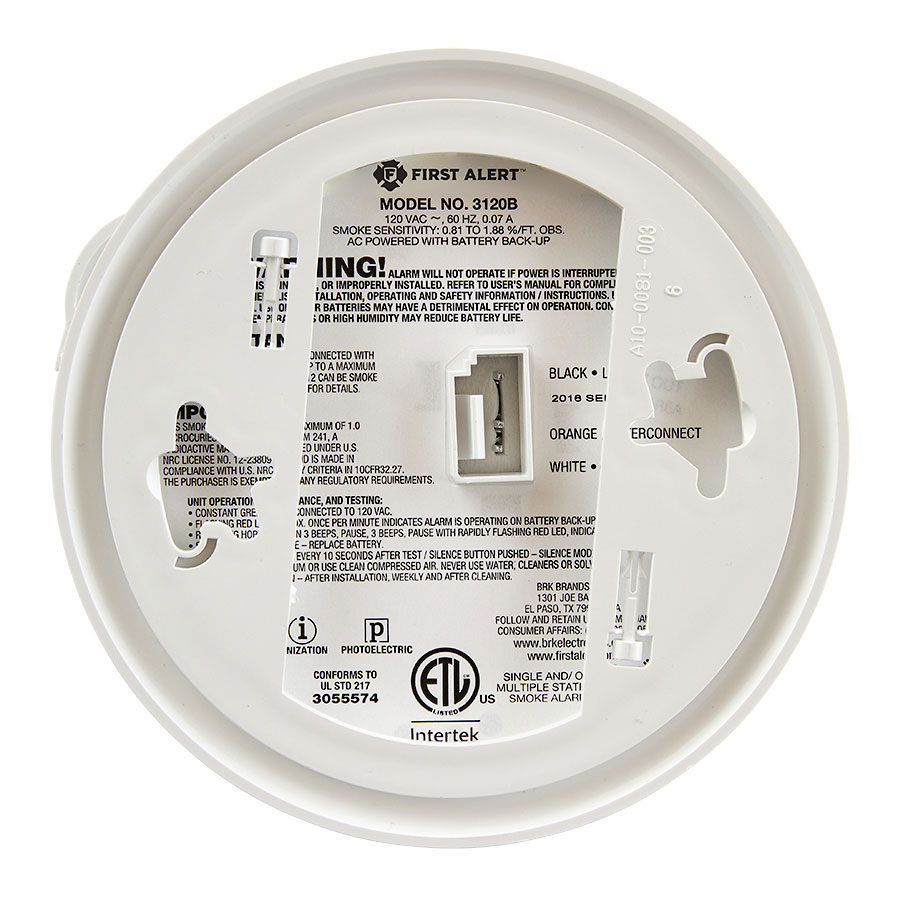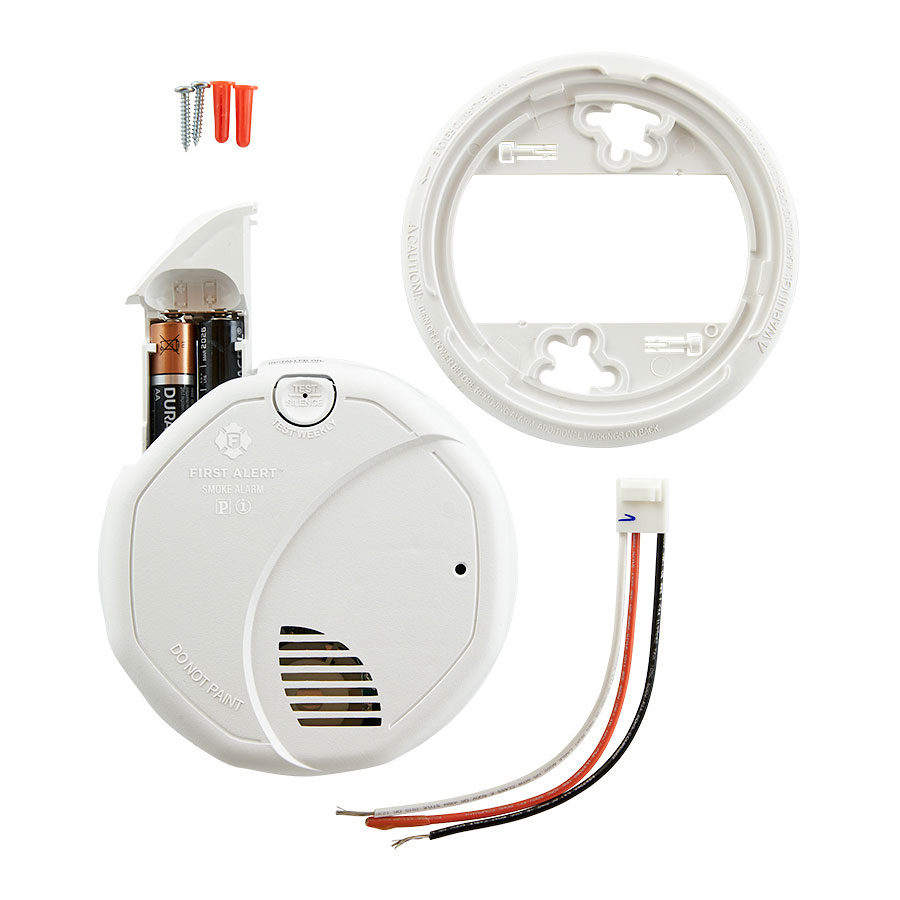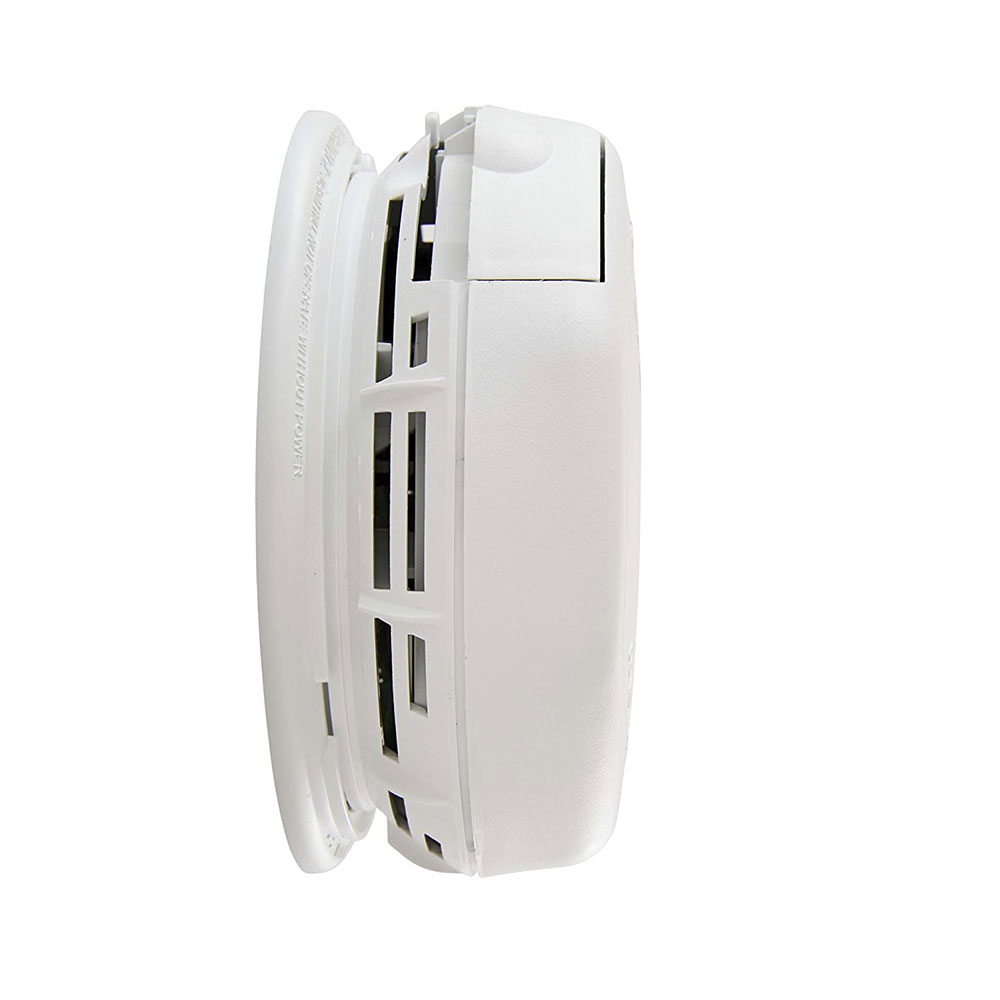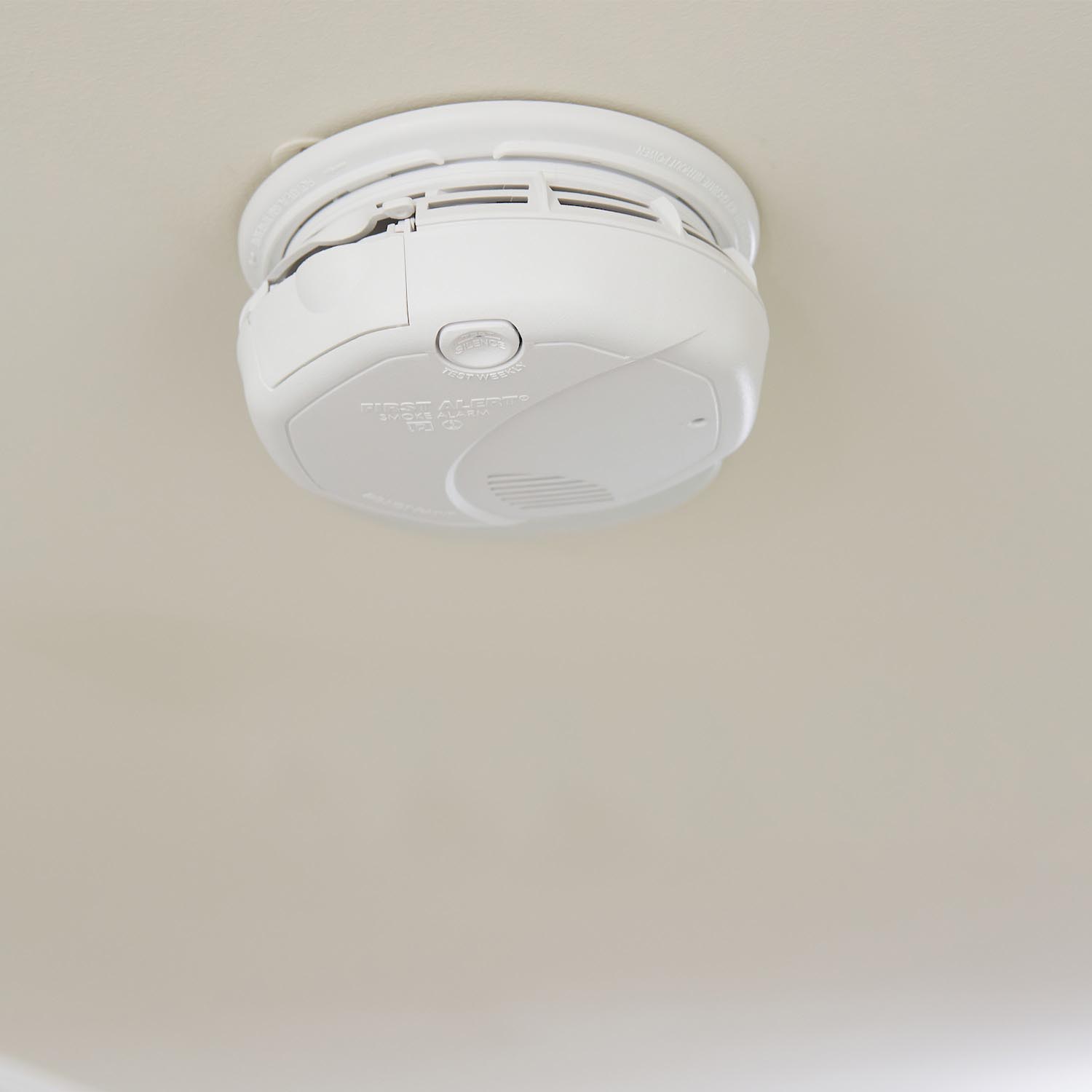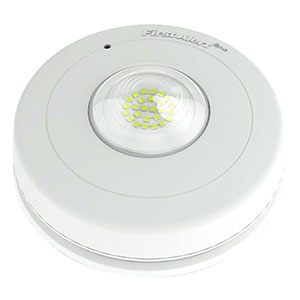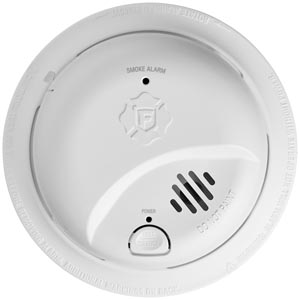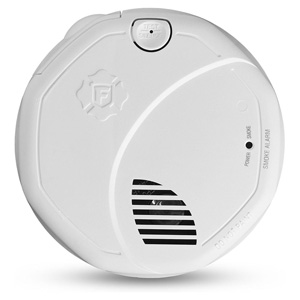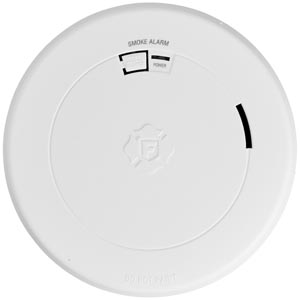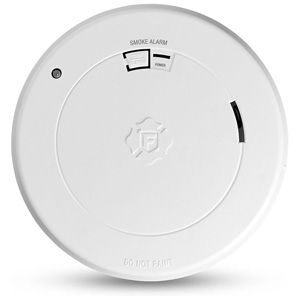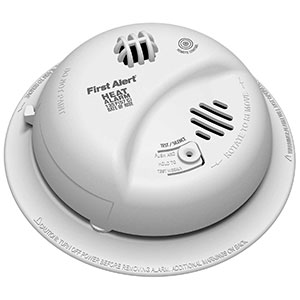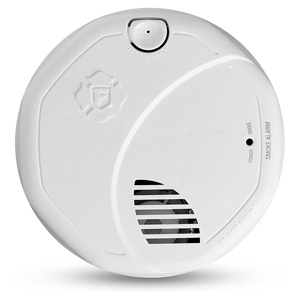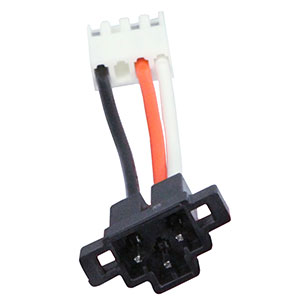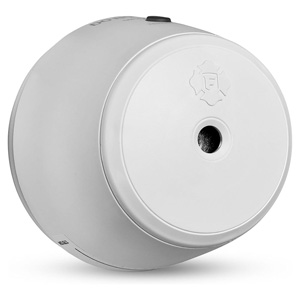12 Pack of Hardwired Dual Sensor Smoke Alarms with Battery Backup
Photoelectric and Ionization Smoke Alarm w/ Battery Backup
The First Alert Hardwired Dual Photoelectric and Ionization Sensor Smoke Alarm with Battery Backup is designed to provide peace of mind. The photoelectric and ionization sensors on this fire detector alert you to both smoldering and fast-flaming fires, offering comprehensive detection and early warning. The 85-decibel fire alarm can connect to other compatible hardwired detectors for larger spaces.
Dual Sensors Detect Two Kinds of Fire
The First Alert Dual Sensor Smoke Alarm features photoelectric and ionization sensors for increased detection. The photoelectric sensor detects smoldering fires from objects like cigarettes burning on furniture or in trash cans, while the ionization sensor detects fast-flaming fires like erupting kitchen grease fires or combustibles. The dual sensors on this fire detector provide you and your family with the earliest warning possible.
Designed for Fewer False Alarms
Smoke from cooking or even shower steam can sometimes set off a smoke alarm. The photoelectric sensor on the First Alert Dual Sensor Smoke Alarm is sensitive to smoldering fires while reducing false alarms. The photoelectric sensor is smart enough to distinguish real threats from everyday activities, resulting in fewer annoying false alarms.
Battery Backup for Detection in a Power Outage
The fire detector is hardwired, but it also features a battery backup to help ensure the smoke alarm can still function in the event of a power outage. The unit requires two AA batteries, and comes with a low-power indicator to alert you when they need to be replaced. A one-touch silence/test button makes it easy to test the detector monthly or silence it during a false alarm.
Optipath 360° and Interconnectivity for Larger Spaces
The First Alert Dual Sensor Smoke Alarm easily connects to other compatible hardwired alarms, making it the perfect solution for larger buildings such as institutions, dormitories, hotels and other multi-family dwellings that use single station smoke detectors. The smoke and fire detector includes patented Optipath 360° technology that provides 360° of access to the alarm, and its 85-decibel siren is designed to be loud enough to awaken even the soundest of sleepers.
First Alert Hardwired Photoelectric and Ionization Smoke Alarm 3120B
How to Install First Alert 3120B Hardwired Smoke Alarms:
In this guide, we'll be showing you how to install First Alert Hardwired Smoke and Carbon Monoxide Alarms. Here are a few items you'll need before starting the installation process: Needle-nose pliers or utility knife, screwdriver, wire stripper, wire nuts and a ladder.
Hardwired Smoke or Carbon Monoxide Alarm Requirements:
- 120V household electrical circuit (unswitched 120VAC)
- Standard wiring junction box to a 4 in. (10 cm) size, on either the ceiling or wall
- Selecting an appropriate location to install your smoke and carbon monoxide alarms (see below guidelines for additional information):
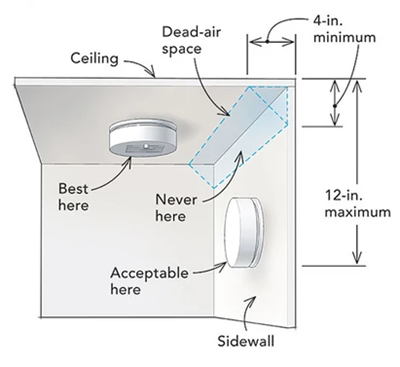
- When installing an alarm on the wall, the top edge of an alarm should be placed between 4 in. (100 mm) and 12 in. (300 mm) from the wall/ceiling line.
- When installing an alarm on the ceiling, place the alarm as close to the center as possible.
- In either case, install the alarm at least 4 in. (100 mm) from where the wall and ceiling meet.
- First Alert Smoke Alarm FAQs
- First Alert Carbon Monoxide Alarm FAQs
Connecting First Alert Hardwired Alarms to 120V Wiring
To begin, turn off power at the junction box and connect your alarm to the building's electrical wiring.
- Locate the junction box and turn off power
- Remove the power connector from the new alarm's packaging
- Using wire nuts, attach the hot (black), neutral (white), and interconnect (orange) wires
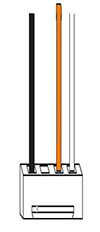
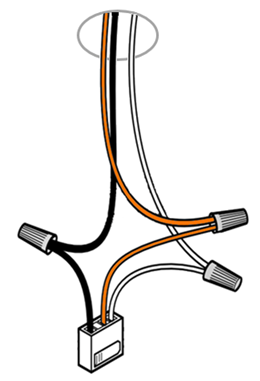
| Black wire (hot) |
Attach to black wire on power connector |
| White wire (neutral) |
Attach to white wire on power connector |
| Orange wire (interconnect) |
Standalone (single-station) alarm: This wire is not needed; tuck the orange wire into the junction box. Interconnected alarms:
|
Mounting First Alert Hardwired Alarms
- Secure the mounting bracket to the ceiling or wall using screws (included in the package)
- Insert the power connector into the plug on the back of your alarm
- Tuck any hanging wires into the junction box
- Position the base of the alarm onto the bracket and turn it clockwise until it's secured
- Remove the pull-tab to activate the backup battery
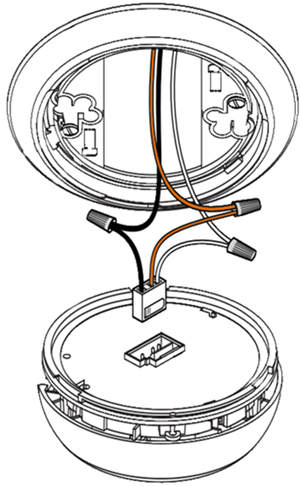
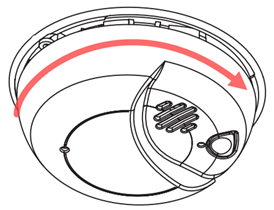
Installing Additional and/or Interconnecting First Alert Hardwired Alarms
If you are installing more smoke or carbon monoxide alarms, you'll want to repeat the process throughout the building. Interconnected smoke and co alarms must meet all requirements:
-
The same fuse or circuit breaker must power all interconnected alarms.
-
Up to 18 compatible detectors can interconnect, with a limit of 12 smoke alarms.
-
The total length of wire interconnecting the alarms should be less than 1,000 ft. (300 meters). This type of wire is commonly available at hardware and electrical supply stores.
-
All wiring must conform to all local electrical codes and NFPA 70 (NEC). Refer to NFPA 72, NFPA 101, and your local building code for more information.
-
Interconnect wiring diagram:
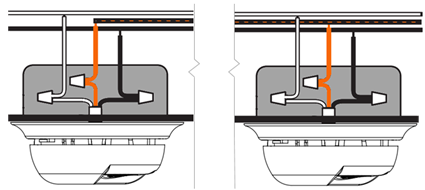
If you have any doubts or reservations about these interconnect requirements, please contact an experienced electrician to install your wiring and hardwired alarms.
Restoring Power and Testing Hardwired Alarms
Once you've installed your hardwired alarms, you'll want to restore power to the junction box. Under regular operation, the power indicator light on the alarm will shine/blink to indicate that it is receiving AC power.
Here's how you can test standalone or interconnected alarms:
-
Standalone Alarms: Press and hold the Test/Silence button until the unit triggers an alarm.
-
Interconnected Alarms: Press and hold the Test/Silence button until the first unit triggers an alarm. All interconnected detectors should sound off. Repeat this process to test each alarm in the interconnected series.
Other reasons include: It could be a different device or appliance such as a security system, monitor, carbon monoxide alarm, or other device which has a similar low battery or alert signal. Some of the same factors that cause unwanted alarms can cause intermittent alarms: dust and insects in the alarm or power interruptions in hardwired alarms. Improper wiring on AC or AC/DC smoke alarms. AC alarms will chirp every 5 seconds if the interconnect wire is grounded. The orange interconnect wire should NEVER be grounded; it should only be used to interconnect other smoke alarms or compatible devices.
- You may not be holding the test button down long enough. Try holding it down for up to 10 seconds (20 seconds on photoelectric models) .
- Your battery may not be installed properly or snapped all the way in place. Even if the alarm sounded briefly when the battery touched the terminals, you still need to make sure it is snapped securely in place. If the battery is loose, in cannot power the smoke alarm properly. After installing new batteries, be sure to test your smoke detector.
- Your AC power may not be on. AC and AC/DC units will have a power indicator light (red or green) that shines continuously when they are receiving electrical power.
- If you have a 10-Year model, the smoke alarm may not have been properly activated. If the tab broke away before the alarm was activated, you can use a toothpick to move the switch over to test the alarm.
- There may be insufficient battery power, try new batteries.
- Problems with voltage or insufficient electrical power (brown out) may cause a continuous weak sounding alarm. For AC or AC/DC models, temporarily disconnect power at the service panel until the brown out is over. If you do not restore the AC power, your smoke alarms cannot warn you of a fire.
- Incompatible warning device. If an incompatible alarm or auxiliary device is linked into a series of AC or AC/DC smoke alarms it may cause the system inadvertently go off.
- It is possible that your smoke alarm "silence" button was pushed by mistake. The alarm will now "chirp" once a minute for up to 15 minutes before resetting.
- Are you sure it's the smoke alarm? Funny to ask, but other devices have similar low battery chirps or warning tones.
- Your "new" batteries may not be fresh. If batteries are stored, especially in cold areas like refrigerators, they lose their charge more quickly. Always check the freshness date on the package when buying new batteries. Keep plenty of replacement batteries on hand so that you are sure to always be protected by your smoke alarms.
If it's time to replace your alarms, consider the NEW 10-Year Life series and never have to worry about a battery replacement for the life of the alarm.10-Year alarms are available in smoke, carbon monoxide and combination alarms.
- Power Source: Hardwired
- Battery Backup: Two AA
- Sensor: Photoelectric and Ionization
- Interconnect: Can be linked with up to 18 units (12 Smoke, 6 CO/Heat/Relay)
- Optipath 360° Technology: Patented technology provides 360° of direct access to the smoke sensor
- Alarm Latch: Remembers which unit initiated an alarm
- Low Battery Latch: Visually identifies which unit is in low battery condition
- Noise Output: 85 dB in a T3 Pattern
- Single Button: One press to silence and test alarm
- Easy Installation: Universal mounting bracket and plug-in power connector for hassle-free installation
- Dust Cover: Keeps alarm clean during construction
- Improved UV Resistance: Keeps alarm from discoloring over time
- Standards: UL 217, CSFM, NFPA 72, HUD, FHA
- Warranty: 10 Year Limited
- Product Dimensions (LxWxH): 5 x 2 x 5 in.
- Product Weight: .85 lbs.
- Smoke particles of varying number and size are produced in all fires. For maximum protection, use both ionization and photoelectric sensing technologies. Ionization alarms are generally more sensitive to fast flaming fires and photoelectric alarms are generally more sensitive to smoldering fires.
If you are interested in ordering a large quantity of items you may qualify for volume pricing discounts. Volume Discount Pricing is a great way for customers to save big on large, bulk orders of most items available in our store. Please send a bulk order request to our friendly sales staff so they may create a quote and provide personal service for your order! You will receive a response within 1-2 business days and our office hours are Monday through Friday, 8am-5pm CST.
- Let us know what products & the quantities you are interested in.
- Get a detailed quote from a dedicated sales rep.
- Our warehouse ships directly to you.
- You enjoy the savings & are now a preferred customer.
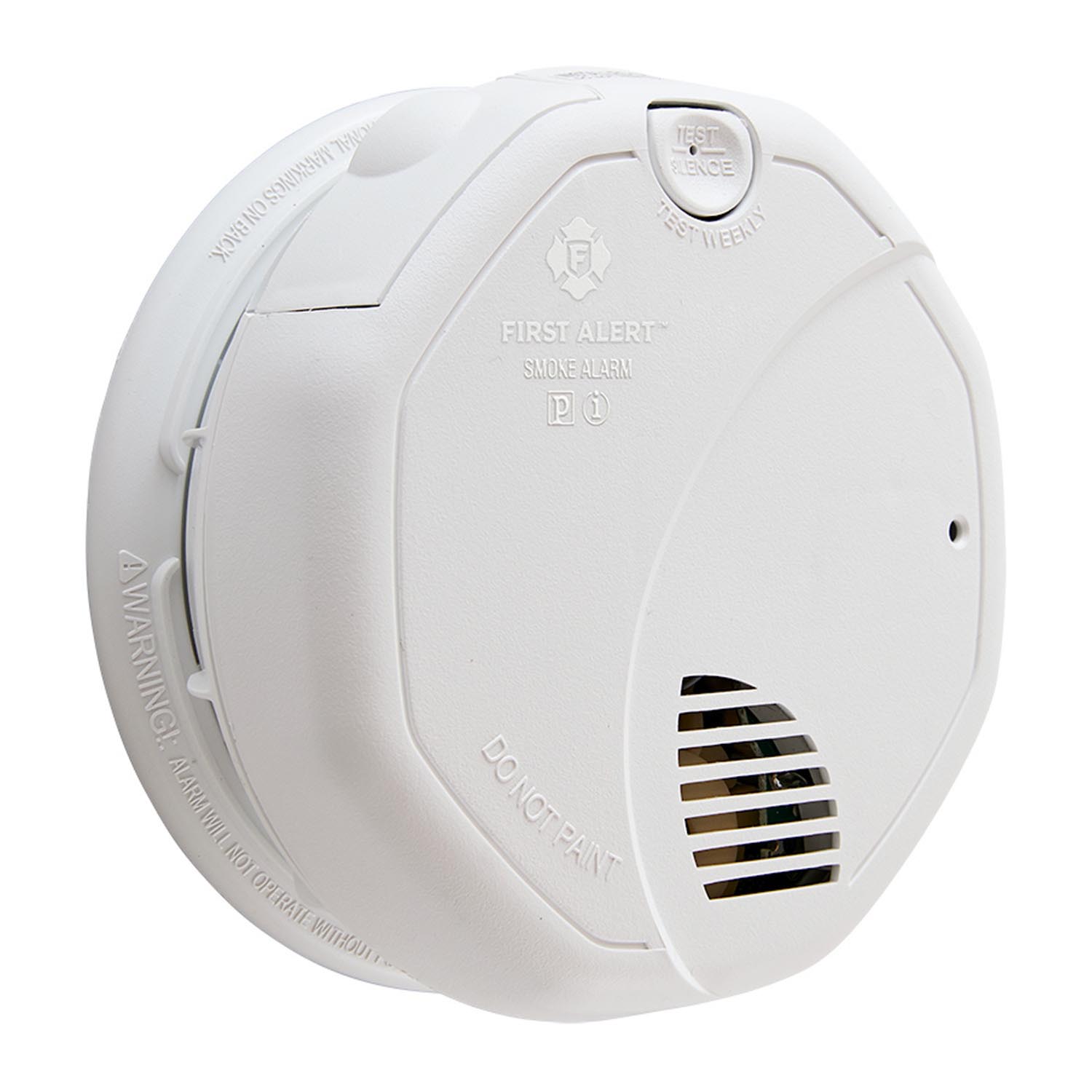
First Alert 120VAC Hardwired Dual Sensor Smoke Alarm with Battery Backup Reviews
easy to install especially if you already have the newer bases installed-also like the AA cells replacing the older 9 volt
Installed all 4 of them and interconnected them, one in each bedroom and the basement.
I purchased this model because of the dual smoke detection features plus the carbon monoxide and I am happy so far with the product.
Very Good
Desired item delivered correctly as expected. Easy to install
I received three smoke alarms. Two for replacement and one for a new installation. I have not installed them yet.
Worked well during a recent furnace meltdown.
Son-in-law had no difficulty with installation. No false alarms which was major problem with original from another company to point it had to be disconnected.
I have just recently replaced all my smoke detectors throughout our 10 room B&B. I bought all First Alert units and particularly like the 2 AA battery design rather than the 9 volt. The batteries are much cheaper. I also later bought three wireless for each floor to improve fire alter status.
Item received in good shape. Easy to install. Good instructions. Product works great.

